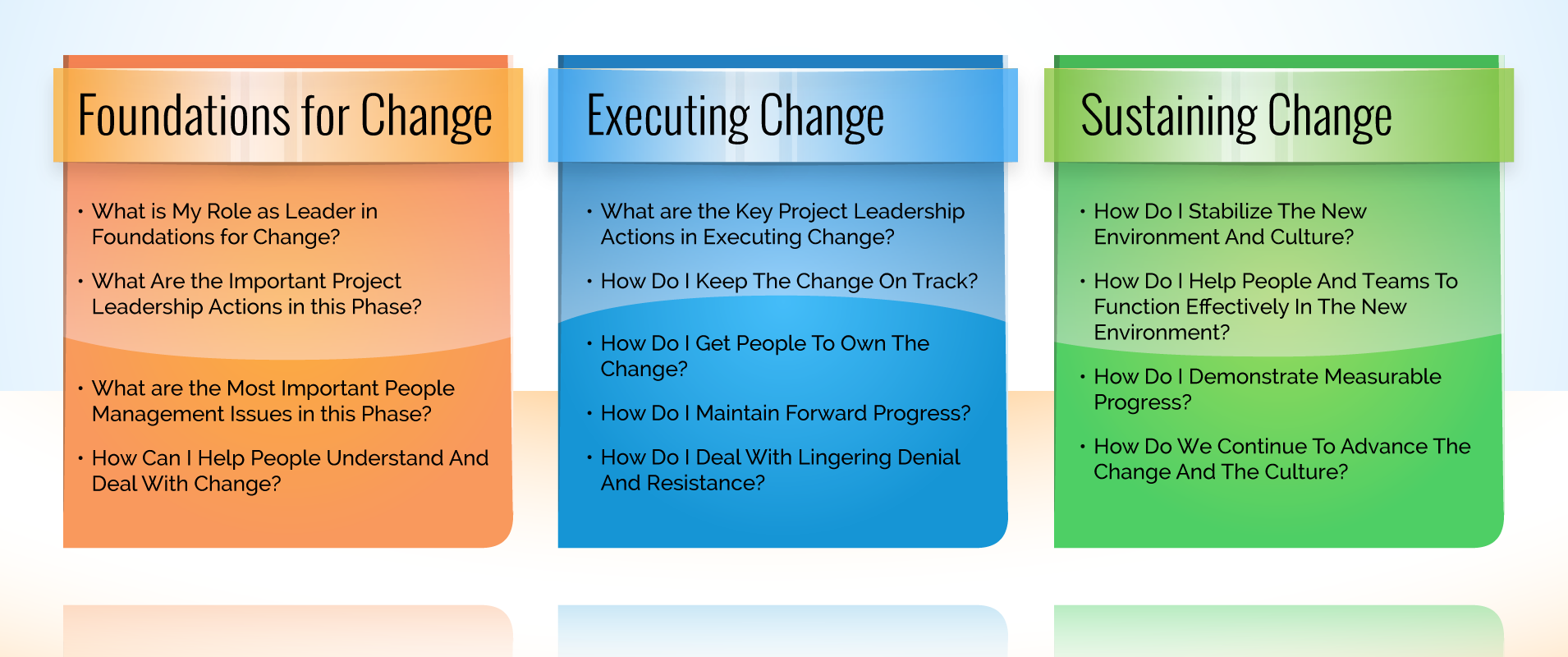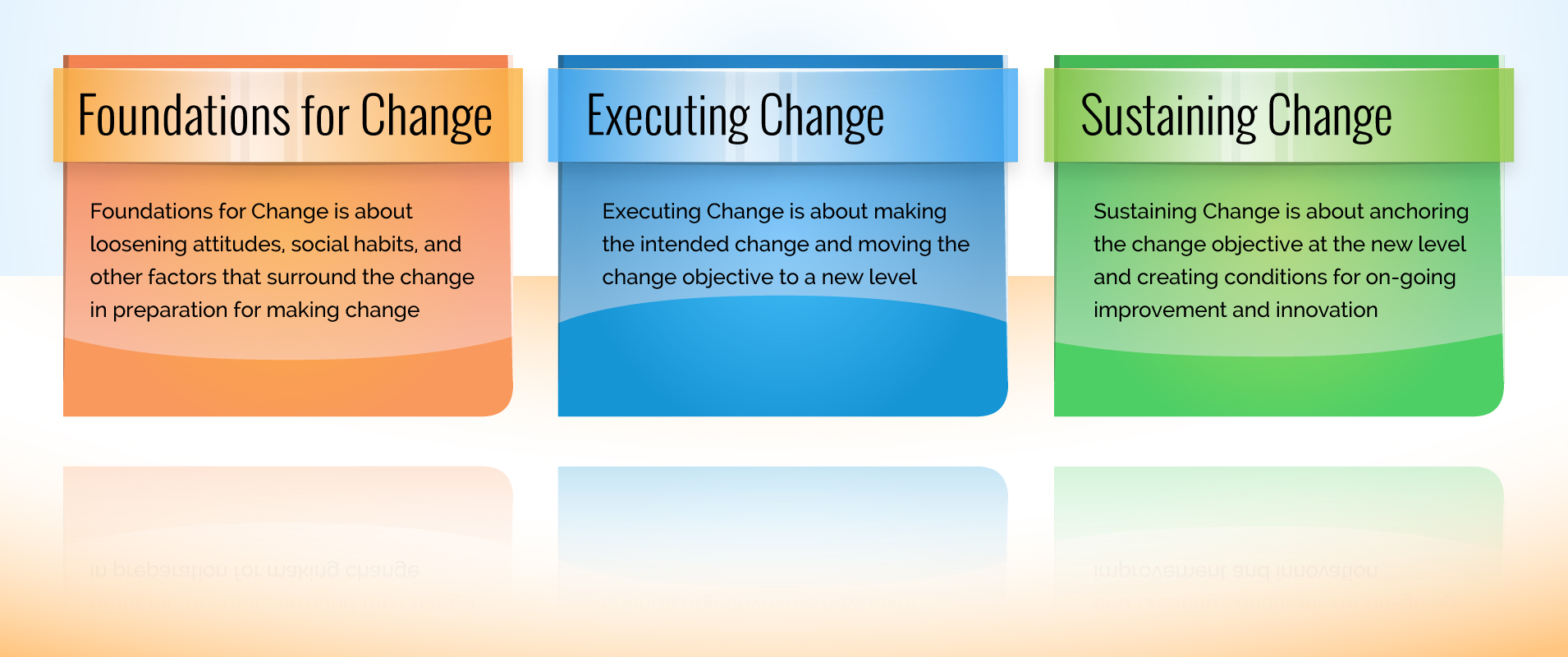The Three Phases of Change Management
One of the biggest risks associated with change is that the change doesn’t stick. After some period of time, the new state slips back to the old. Permanency of change must be part of the objective. In order to make change permanent (or at least stable until the next change is required), the effort ideally includes three change management phases.
- Foundations for Change is about loosening the attitudes, social habits, and other factors that surround the change objective. In this phase, it is vitally important to understand the current equilibrium – the condition for “no change” – that characterizes the current state. Then and only then can strategies about where and how to intervene be formulated.
- Executing Change is about deliberately moving the change objective (technology installation, restructure, organizational integration, process redesign, new approach to performance management, etc.) to a new level that addresses the presenting problem and is consistent with the vision.
- Sustaining Change is about anchoring the change objective at the new level. The major risk in this phase is regression to old habits and familiar ways. So, this phase is about stabilizing the change and supporting it with proficiency in new behaviors, values, and practices. Quickly thereafter it is also about creating conditions for on-going improvement and innovation.
These three change management phases are the organizing principle for this site and give it its basic structure.
Change in Two Dimensions That Cannot Be Separated
There is a dual nature to large-scale change management processes. In one dimension, the change effort must be led and monitored like any other project. In the other dimension, people, who will be affected by the change, must be managed through the transition. To manage change in the workplace, it’s critical to pay attention to both dimensions throughout the change effort, and it’s important to note that they are two sides of the same coin. They cannot and should not be considered “either-or.”
Leading a change project
This dimension provides a project leadership orientation to the change effort. First, it ensures that the critical elements are being given appropriate consideration and oversight. These include:
- Establishing the business case for change
- Setting the vision
- Building broad-based support
- Diagnosing impact and resistance
- Communicating
- Mobilizing the organization
- Structuring meaningful engagement
Second, it drives change to be woven into the fabric of the overall project plan and not treated as a parallel or collateral effort.
Managing people through change
This dimension focuses on what leaders and managers need to do to help people transition through the intended change. First, it ensures that leaders and managers diagnose the impact of change on their people before the change is launched. Second, it ensures that leaders and managers work with people through the change in a supportive way that is beneficial for both the organization and for moving the individual through the change. This is critical because the change won’t work as intended if people are left behind.
Both dimensions – leading a change project and managing people through change – are fundamental to the change management framework used in The Change Kit.
 Matters pertaining to project leadership are highlighted in the lighter colored portions of each phase in the illustration above. Matters pertaining to managing people through change are highlighted in the darker colored portions. Depending on your position in the organization and role in the change, you may give more time, attention, and effort to one or the other. But it is important to know that being familiar with and being able to act along both dimensions across the three phases is critically important to the success of any change effort.
Matters pertaining to project leadership are highlighted in the lighter colored portions of each phase in the illustration above. Matters pertaining to managing people through change are highlighted in the darker colored portions. Depending on your position in the organization and role in the change, you may give more time, attention, and effort to one or the other. But it is important to know that being familiar with and being able to act along both dimensions across the three phases is critically important to the success of any change effort.

